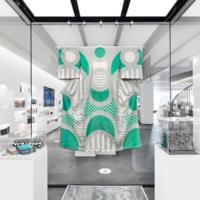Japanese can roughly be split into two camps: those equipped with an encyclopedic knowledge of history and those who have only a vague idea of who the samurai were or that a Shogun once lived in what is now the Imperial Palace. The history geeks on one side and those who couldn't care less on the other.
Back in the 20th century, Japanese jidaigeki (samurai period dramas) targeted the former, particularly those middle-aged and older individuals still steeped in the traditions and values of a bygone and terribly insular era. To the historically unenthusiastic, jidaigeki came off as gloomy and creepy. These period dramas depicted a world where women were slaves, children were miserable and everyone went around with preposterous hairstyles. Not surprisingly, jidaigeki was positioned on the fringes of the mainstream entertainment market. Audience ratings for NHK's epic taiga period dramas — widely acknowledged as the last word in credible-but-watchable jidaigeki — dropped from a 39.7 percent high in 1987 to a 12 percent all-time low in 2015.
But Japan's weird and isolated history may be able to reach new audiences as long as jidaigeki's self-seriousness stays in the background and the fun factor is pushed to the forefront. The genre sells, and it could well become the newest facet of "Cool Japan."

















With your current subscription plan you can comment on stories. However, before writing your first comment, please create a display name in the Profile section of your subscriber account page.